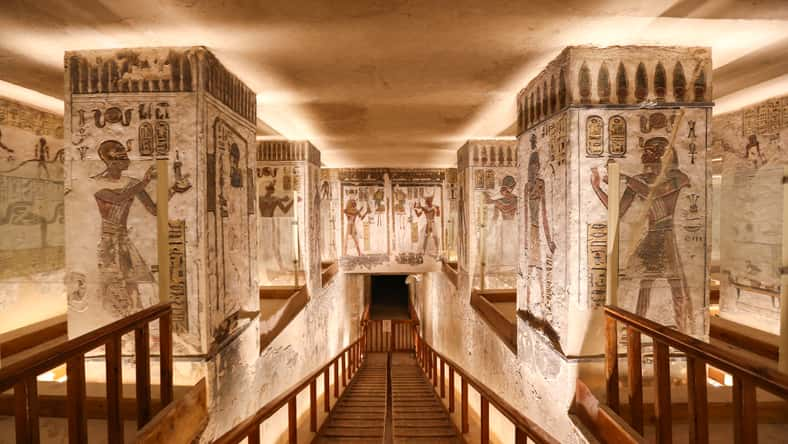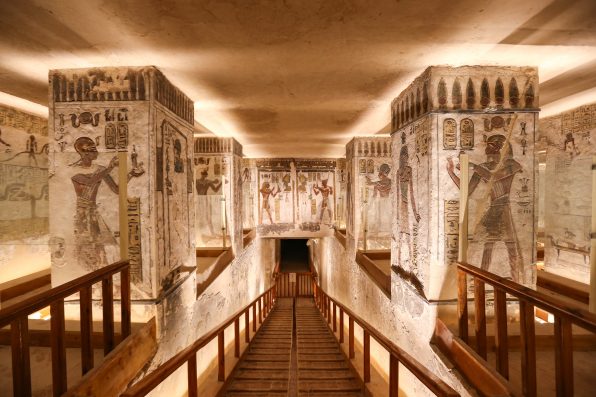Archaeologists Recently Rediscovered A Lost 4,400-Year-Old Tomb Containing The Mummy Of An Ancient Egyptian Official

Archaeologists with the Czech Institute of Egyptology, a department within the Charles University in Prague, have rediscovered a lost tomb containing a mummy.
The tomb belonged to an ancient Egyptian official named Ptahshepses, who lived around 4,400 years ago during the 24th and 25th centuries BCE. The tomb was found near the archaeological sites of Abusir and Saqqara with the help of detailed satellite imagery and some old maps.
Nearly 160 years ago, the tomb was partially uncovered by French archaeologist Auguste Mariette. She came across a huge false door that was intricately decorated and a lintel, which is a type of supporting beam.
The items were extracted and are currently on display in London’s British Museum. However, the tomb became swallowed up by the desert’s sands once again shortly after her discovery.
The false door tells the story of the life of Ptahshepses. He received his education at the court of Menkaure, an ancient pharaoh who died during the Old Kingdom era of Egypt.
Ptahshepses married the daughter of Userkaf, a pharaoh who ruled for a short period in the early 25th century BC. Evidence suggests that he was the first known official from non-royal lineage in Egyptian history to marry a member of royalty.
Toward the end of Ptahshepses’ life, the kingdom suffered a series of crises. Among the ruling elite, the legitimacy of some leaders was questioned. The cost of living also soared upward, and climate change caused a decline in the annual flooding of the Nile River, which was the main contributor to the economy’s growth.
According to Miroslav Bárta, the head of the archaeological work at the site, good floods meant rich grain harvests. Grain paid for many things, from taxes to workers’ wages. The decrease in the annual flooding during a time when expenses were rising was part of what led to the downfall of the Old Kingdom.
The search for the tomb has been a long and difficult one, but finally, researchers’ efforts have been rewarded. At the excavation site, a 137-foot-long and 72-foot-wide structure of the tomb was uncovered. It includes a well-preserved chapel with a painted, decorated entryway and a long corridor.

EvrenKalinbacak – stock.adobe.com- illustrative purposes only
The burial chamber appeared to have been robbed centuries ago, but archaeologists still found some pottery, jars, remains of offerings, and a mummified fish. In addition, the partially opened sarcophagus contained the complete mummy of Ptahshepses.
Analysis of the mummy confirmed that Ptahshepses lived a long life. According to researchers, he lived to be the age of 65 or more.
If true crime defines your free time, this is for you: join Chip Chick’s True Crime Tribe
She Walked Out Of A First Date After A Guy Berated Her For Not Wanting To Have Kids
She Got Up And Left Her Own Wedding In Tears After Her Parents Humiliated Her During Their Speech
She’s Worried That Her Preschooler Son Is Showing Psychopathic Signs
Want To Deer-Proof Your Garden? Here Are 10 Shrubs That Deer Won’t Dine On
Sign up for Chip Chick’s newsletter and get stories like this delivered to your inbox.
More About:News





